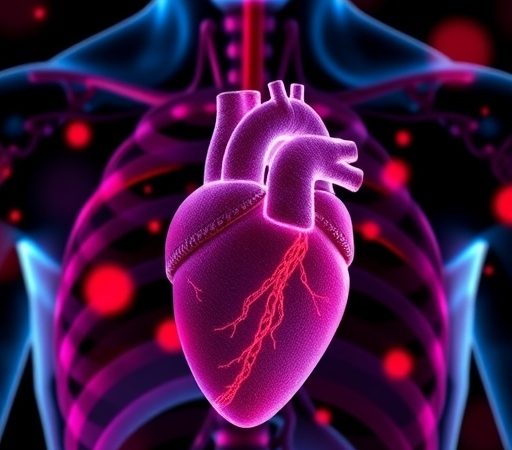As a great challenge facing the world, deep space exploration can be enabled only in a few countries with a success rate of around 50%. With the advancement of spacecraft and scientific instruments, the capabilities of small platforms have been greatly improved. It is now possible to construct micro- and nanosatellites for deep-space exploration. As spacecraft become smaller, there is a need for proper micropropulsion systems. In a research paper recently published in Space: Science & Technology, Yanming Wei from Beijing Institute of Control Engineering (BICE), analyzed micropropulsion systems in conjunction with the various mission requirements of China’s deep space exploration. The deep space missions and the propulsion systems of the platform discussed by the author were primarily based on products developed by Beijing Institute of Control Engineering (BICE), which had specialization in the control and propulsion systems of spacecraft and had the accomplishment of China’s 90% of satellites and spacecraft.
First of all, the author introduced several micropropulsion modules, which are developed to meet the needs of various occasions. The cold gas propulsion has relatively low thrust, but it has high accuracy and high reliability, so the technology is suitable for the microsatellites with a mass of less than 10 kg or platforms that require high precision control. The chemical propulsion has the highest thrust level and flexible total impulse. The electric propulsion has a high total impulse and low thrust. For missions with extreme distances, electric propulsion has the advantage of saving fuel for more payloads. Afterwards, the selection of propulsion systems for deep-space exploration was discussed. For lunar exploration, both Queqiao and Longjiang were equipped with monopropellant systems but with different thrust levels, as Longjiang’s mass is about an order of magnitude lower than Queqiao’s. For Tianqin-1, a pathfinder for the gravitational wave detection, realizing drag-free control, is essential, so cold gas thruster and μCAT were chosen to provide μN-level variable thrust. For deep space missions with separatable transfer module, BepiColombo, a collaborative mission of the European Space Agency and the Japanese Space Agency to study Mercury and its environment using two Mercury satellites, is analyzed.
Then, the author introduced 3 types of micropropulsion modules, i.e. the solid cold gas propulsion module, the ADN monopropellant micropropulsion module and the microcathode (μCAT) arc micropropulsion module propulsion module, which are developed by BICE and have passed flight tests. Packing the propulsion system into modules can greatly reduce the complexity of the design, manufacturing, and testing processes, lowering the technical threshold and promoting cooperation. The solid cold gas micropropulsion module was developed for formation flight, station keeping, and other tasks of micronanosatellites, which necessitated a propulsion system with low power consumption, modular design, and plug-and-play installation. The ADN-based monopropellant was a mixture of three components: ammonium dinitramide, methanol, and water. It was nontoxic and had a high density, a low freezing point, low volatility, and high stability. Thus, the ADN monopropellant micropropulsion module had the advantage of not requiring any special safeguards during the storage and handling processes. In 2019, the ADN micropropulsion module successfully completed a flight test on the Ningxia-1 satellite. The μCAT was based on the physical phenomenon of vacuum (cathodic) arcs and firstly developed by the George Washington University’s (GWU) Micropropulsion and Nanotechnology Lab. The CAT module contained no pressurized parts, the manufacturing process was much simpler when compared to other propulsion systems that used a gas medium.
Finally, new developments for interstellar missions were discussed. On one hand, investigation of the solar system boundary is the frontier of astrophysics. China is proposing a mission to investigate the nose and tail of the heliosphere, which is the boundary between the interstellar medium and plasma that originated from the sun. In the mission, a pair of probes are proposed to launch and then fly across a distance of 80 to 150 Au before arriving at the heliosphere. The mission is significant since the edge of the heliosphere has not been fully explored by mankind and the physical property of the boundary remains unknown. On the other hand, propellant-free propulsion, e.g. electric sail (also known as HERTS, Heliopause Electrostatic Rapid Transport System) is a prospective technology for future deep space exploration. The electric sail has many long and thin wires or so-called tethers, extending from its center. The tethers are charged to thousands of volts, creating high potential regions around them to deflect protons. The device generates thrust by momentum exchange with the photons, and it functions as a virtual sail propelled by the solar wind. In addition, the electric sail can function as a particle probe. As the spacecraft approached the termination shock, where the solar wind abruptly decelerated from supersonic to subsonic, the thrust of the electric sail could be expected to drop dramatically. The force and current on the electric sail would provide valuable data for heliosphere research.
Reference
Authors: Yanming Wei, Hao Yan, Xuhui Liu, Yang Yu, Jinyue Geng, Tao Chen, Tuoqu Fu, Gaoshi Su, Yu Hu, and Daoman Han
Title of Original Paper: The View of Micropropulsion Technology for China’s Advanced Small Platforms in Deep Space
Article llink: https://doi.org/10.34133/2022/9769713
Journal: Space: Science & Technology
Affiliations:
Advanced Space Propulsion Laboratory, Beijing Institute of Control Engineering, Beijing 100090, China
Beijing Engineering Research Center of Efficient and Green Aerospace Propulsion Technology, Beijing 100090, China


